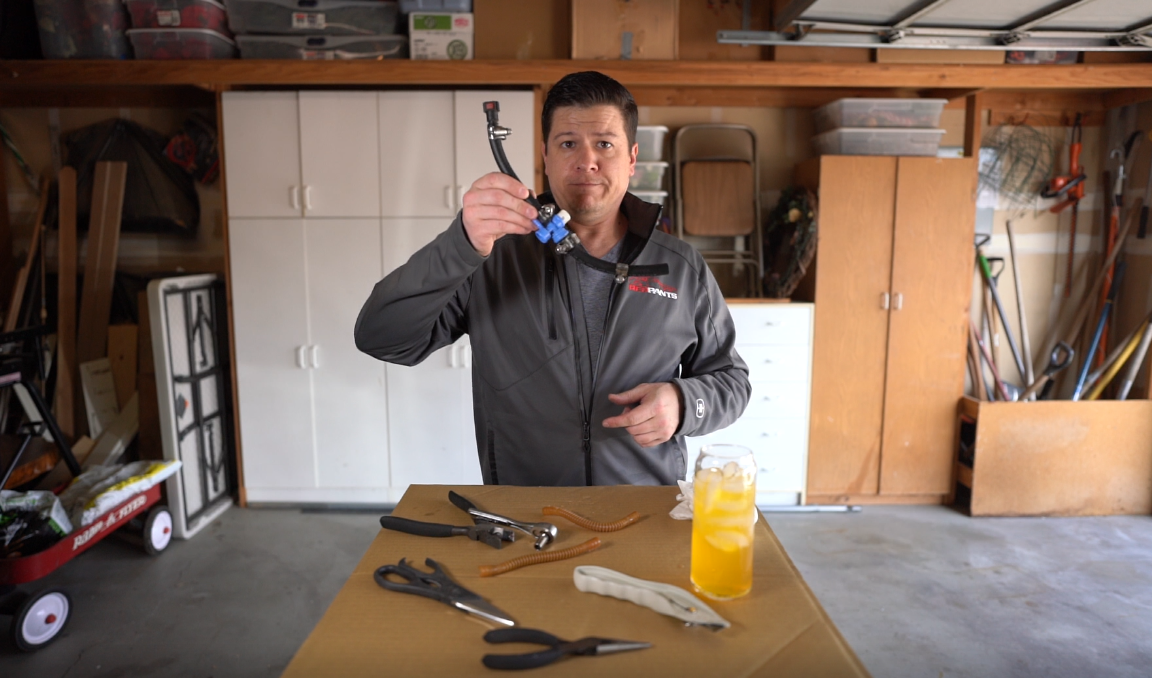
Difficulty Getting It Up [and Running]
DISCLAIMER
The information provided here is for general guidance purposes only. It is a combination of manufacturer guidance, first- and second-hand experience, and personal opinion. It may me inaccurate, incomplete, or outdated.
A while back I had a persistant problem with my engine of my 2007 V8 Vantage not starting up too well. The issue started slowly, as many things do, and left me wondering if it was taking longer for my engine to turn over or if it was just me. But, after a couple months, it did become clear that I had to crank my engine longer and longer and I finally had to admit that I was having difficulty getting it up [and running].
I made a video briefly talking about the issue, then how I diagnosed and eventually fixed it. Here it is.
The full story is a bit longer, and it's about why I left the problem for so long. The bottom line for that is, frankly, I was busy and my own car was a lower priority than everything else I had to do (like helping everyone else with their cars). Since the problem was rather minor at first, I frankly ignored it so I could focus on other things.
What was originally an extra couple seconds delay suddenly became several seconds sitting there holding the Start button. My then-current setup was a Braille B3121 battery and Redpants lightweight battery kit. The Braille battery was substantially smaller than the factory Varta battery, but I've been abusing them for several years and know the small-but-mighty AGM battery could handle the job. Sure enough, when I replaced the battery with a new one, there was no change. (Side note: My spark plugs and coil packs had maybe 15,000 miles or so on them, so I wasn’t worried about those.)
I remembered that a long time ago I'd had a strange issue with my car sometimes not starting. It wasn't that it was difficult to start in those situations, but rather that it was absolutely dead - as if the battery wasn't connected at all. And, sure enough, that was actually the problem at that time. The stud where the ground cable attached to the vehicle chassis had somehow snapped off. If the broken stud was resting against the chassis, the car would start like normal. If the broken stud was hanging free suspended in the air, the car battery was effectively disconnected and there would be zero power. I moved the ground cable to another stud and it fully fixed that problem. I checked that ground and all the other wiring around the battery to see if this problem had somehow returned, or if some other bad ground was causing the start-up problem, but everything checked out.
My last year in Florida was mostly spent either at home working or out of town traveling. I didn't have to commute to work since I'd quit my job to fully focus on Redpants, and I didn't have any social life to speak of, so my car was relegated to grocery duty... and liquor store runs. Driving it so seldom is why it didn't really demand higher priority.
I was chatting with my buddy Bruce about our supercharged V8 Vantages and I mentioned the start-up issue. I'd had the problem before supercharging my 2007 V8 Vantage, and it continued exactly the same afterwards. He asked if I'd changed the starter yet (I hadn't), so he offered to help me change it when I stopped in town to visit him during my cross-country road trip.
When we pulled out my old starter, it was still extremely warm despite having sat so long while we worked on the car. That's bad. When we tested the car after putting it back together, the starter felt much stronger. That's good. But, the problem came back over the next couple weeks. That's bad again.
Replacing the starter did help since the original was burned up, but it wasn't the aggressor... it was a casualty. Something else was going on that was preventing quick firing of the engine and holding the Start button so long to crank the engine had ruined my original starter motor. I'd made a necessary repair but I needed to get to the source of the problem sooner rather than later so I wouldn't have to replace my new starter with yet another one.
The next big hint that pointed me along was when I had my ill-fated dyno session with Bruce. In the warmup runs with my car we noticed irregular fuel pressure. The tech said that my fuel pressure was erratic and not holding steady. Before we could do any testing, my radiator cracked and led to a whole other string of events that distracted me from getting to the bottom of all this.
I called up a Master Technician buddy of mine at Aston Martin and explained what was going on. I told him that I'd replaced the coil packs, spark plugs, battery, and starter, and found the eratic fueling during a dyno session. He said that, based on what I'd done so far, he expects the fuel issue to be the source of all my woes. He said that he sees fuel pumps in the V8 Vantage start to fail around 100,000 miles so that'd be worth checking. My start-up problems had started before that (sometime in the mid-to-late 80k-mile range), but it was something I decided to address as preventive maintenance since I still have so many long-term plans for my car, and I want to make sure it didn't have any fueling issues that would lead to bigger problems with the supercharger that was now on it.
Another thing he told me to check was fuel pressure - I should check fuel pressure at startup, while driving, and also after turning off the engine. Fuel pressure should build quickly as the engine cranks, stay steady while driving, and should then not lose more than 1 psi within 24 hours after the engine is turned off. Struggling to build fuel pressure at start-up could be a sign of a bad fuel pump or of a leak. Failure to hold fuel pressure after the engine is turned off is a sign of a leak - and he said there was a specific valve to check inside the fuel tank if that's the case.
The OBDII tool I had at the time couldn't do this because it disconnected from the car when the engine was shut off. I was able to use it to see the slow buildup of fuel pressure when the engine first turned over and I could see dips in fuel pressure while driving, but I couldn't see what the fuel pressure did after the engine was turned off.
When I finally got my car back to Idaho, I found myself a bit stranded which gave me some extra time to commit to my car. I hopped over to a local shop and chatted with them about the problem. I said I wanted to check the fuel pressure to see how it behaves especially after the engine is turned off. Zach hooked up his scan tool, noted the slow fuel pressure buildup when cranking the engine, and then cut the engine after pressure had finally built up to the correct level (“about 55 PSI” according to Aston Martin’s OBDII manual).
The fuel pressure should not have dropped more than a single PSI. It instantly plummeted to just a few PSI. I pulled open my gas tank and tested the check valve I'd been told about. It couldn't hold any pressure at all and, sure enough, it had been the problem all along.
I bought a used fuel pump assembly from a salvaged V8 Vantage to cannibalize and use for testing - I wanted to make sure the valve would truly solve the start-up problem before spending the inordinate amount of money Aston Martin charges for a new one.
Testing the two valves showed my original one held no pressure whatsoever and the salvaged one did, so I went ahead and used it.
(For the record, the knife I used to cut out the salvaged valve was dull and rounded and it would normally be much easier to cut out than I was showing in that video.)
Confident that I’d finally, finally sorted the problem, I ordered a new set of fuel pump and filter assemblies and had them installed as part of my car’s major overhaul.
My Master Technician buddy went on to explain that the error code for fuel pressure (P0191) may not have registered a fault if the fuel pressure while the engine was running didn’t deviate enough from expected values. Since the leaking check valve was causing startup issues before the engine was running, and the fuel pressure loss occurred after the engine was turned off, the only time that P-code would be triggered is while the engine was running. Although my fuel pressure was erratic, my fuel pump was still able to supply enough fuel to maintain enough pressure to keep the fuel rail pressure sensor happy.
So, that’s the story about the start-up issues I had, how it was caused by my fuel system, and the little blue check valve at the heart of it all. I figured the full story about it could help a few people out since it can be used as part of a diagnostics approach in case anyone else finds themselves having difficulty getting it up [and running].


